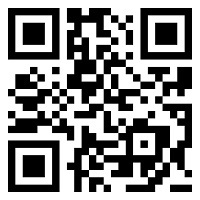
 Data Structure
Data Structure Networking
Networking RDBMS
RDBMS Operating System
Operating System Java
Java MS Excel
MS Excel iOS
iOS HTML
HTML CSS
CSS Android
Android Python
Python C Programming
C Programming C++
C++ C#
C# MongoDB
MongoDB MySQL
MySQL Javascript
Javascript PHP
PHPPhysics
Chemistry
Biology
Mathematics
English
Economics
Psychology
Social Studies
Fashion Studies
Legal Studies
- Selected Reading
- UPSC IAS Exams Notes
- Developer's Best Practices
- Questions and Answers
- Effective Resume Writing
- HR Interview Questions
- Computer Glossary
- Who is Who
BLOB: Binary Large Object
Introduction
The abbreviation for "Binary Large Object" is BLOB. BLOBs were invented by Jim Starkey and were originally just large amorphous chunks of data that may be many gigabytes in size. In the modern world, a whole lot of data being available online for everyone to use requires proper containment and encryption, that’s where BLOBs come in handy. Different types of data are stored in BLOBs, QR codes are one of the most common BLOB types.
BLOBs
The term Binary Large Object (BLOB) refers to how database management systems handle and store long strings of data. It stores multimedia objects/data such as audio, videos, images, and so on, but it also stores programs. Because they are designed to hold multimedia objects, BLOBs are widely used to store unstructured data files in SQL (Standard Query Language). Common BLOB examples are Images (JPG, PDF, RAW, PNG), Video (MOV, MP4), and Audio (MP3). The geometrical features of the QR code may be recognized using BLOB.
Modern techniques for QR code detection and recognition
There are several steps for detecting a QR code. For precise QR code detection, alignment, and recognition, it is essential to choose more critical steps and examine existing technological challenges.

Challenges for detecting and recognizing QR codes are −
Noise reduction, image size normalization, pseudocolored grayscale, contrast enhancement, or integral image generation.
Symbol alignment and correction of distortions, which in practice are caused by symbol rotation, skewness, slope, or occlusion.
To overcome all the above-mentioned challenges modern techniques are being used for QR code detection and recognition.
To extract edges and locate QR codes, the Hough transform and Sobel operator approaches are utilized.
Space transformation is used to rectify picture distortion, achieving an identification precision of roughly 98.57% with an average duration of 38 ms.
We can use a convolution neural network for symbol recognition in images with rotation, blur, and uneven illumination reaching a correct detection rate of about 95.2% by localizing and segmentation of QR codes with Hough transform.
The problems we still face with QR code detection are significant nonuniform illuminations, noising, strong blurring, symbol deformation, and the simultaneous detection of multiple QR symbols.
QR codes and their data types
In QR codes there are different types of patterns and they each represent different data. The 3 corner squares represent the position of the QR code while scanning, and the smaller squares represent the alignment. 2 straight lines of alternating black and white squares join the three squares in the corner, they represent the timing, there are version and format information right to the sides of the position squares and the rest of the QR stores the data. The empty area outside the QR is called the quite zone.
The proposed approach for QR code detection
To detect and recognize QR codes under uncontrolled viewing conditions, a BLOB (Binary Large Object) based technique is proposed. Following iterative procedures, the picture created by BLOB's 8 components regions of interest is filtered, leaving only patterns that reflect typical QR code symbols. Even if the QR code is partially detected, rotated, distorted, skewed by perspective, or influenced by lighting and noise, this technique guarantees perfect QR code detection. By analyzing local geometrical aspects of QR codes, this BLOB technique for QR code detection achieves a recognition rate of 80% to 100% even when images are obtained under poor uncontrolled conditions.
Conclusion
There are different challenges for QR code detection and recognition like noise, blur, skewed, lightning, symbols deformation, etc. A Binary Large Object (BLOB) is a type of data that stores binary data. BLOB examples are MP3, MP4, MOV, PNG, JPG, and other multimedia objects. BLOB can be used for QR code detection with a recognition rate of 80% to 100% even though the QR code images are taken in uncontrolled environments. Significant nonuniform illuminations, noise, intense blurring, symbol deformation, and simultaneous identification of many QR symbols are still issues with QR code detection.
FAQs
Q1. What is binary data?
Binary data is discrete data that is either in 1 or 0, yes or no, etc. In computer science, it is especially 1 or 0.
Q2. Is the bar code and QR code the same?
Bar code store data in one dimension while QR (Quick Response) codes use two dimensions. QR code is the more advanced form of bar code.
Q3. What are the uses of QR codes?
Nowadays QR codes are used for many purposes. Examples: Cashless Payments, Recipe books, QR codes on resumes, E-learning, In museums and art exhibitions, Product Packaging, QR Codes on table restaurants to scan the order, etc.

